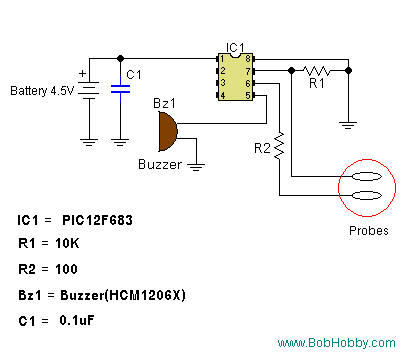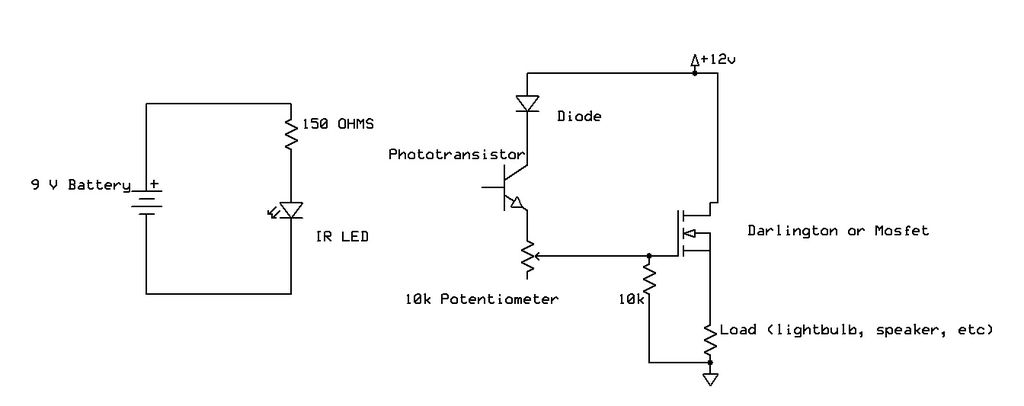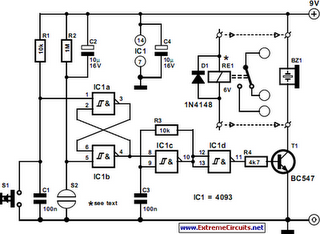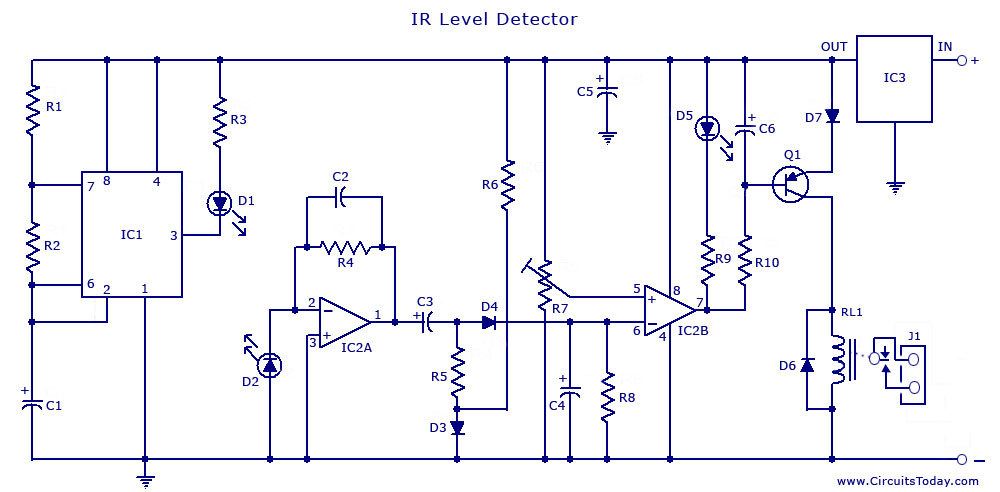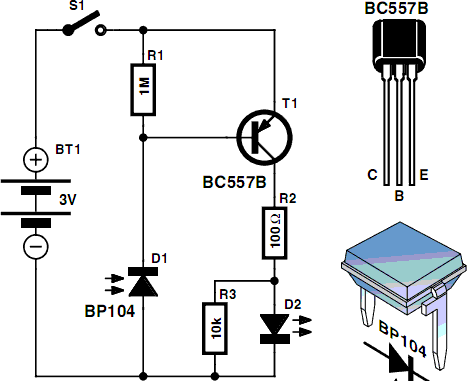
IR (Infrared) DetectorCircuit
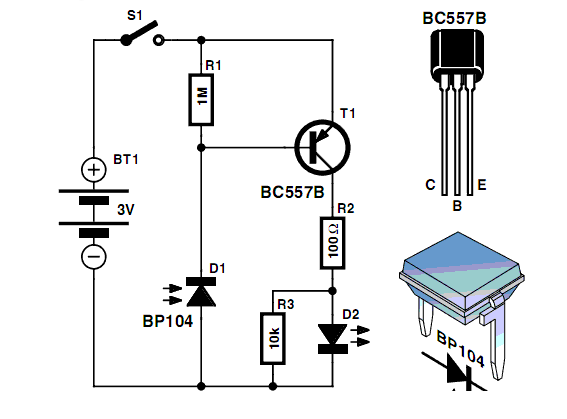
Men, in particular, appreciate the convenience of television remote controls, which can often lead to frustration for their female partners. Men seem to have a desire to understand what...
The initial statement highlights a common dynamic in household technology usage, specifically focusing on the television remote control. In an electronic schematic context, this scenario can be expanded to illustrate a simplified remote control system and its components.
A typical television remote control operates using infrared (IR) or radio frequency (RF) signals. The remote consists of a microcontroller that processes user inputs. When a button is pressed, the microcontroller generates a specific binary code corresponding to the function requested, such as changing the channel or adjusting the volume.
The output from the microcontroller is directed to an IR LED (light-emitting diode) in an IR-based remote control. The LED emits modulated infrared light, which is received by the television’s IR sensor. The sensor converts the IR light back into electrical signals, allowing the television to interpret the command.
In RF-based remote controls, the microcontroller sends signals to an RF transmitter, which broadcasts the command over radio waves. The television is equipped with an RF receiver that decodes the signals and executes the corresponding action.
Power for the remote control typically comes from batteries, which are connected to the microcontroller and the IR or RF transmitter. The circuit design includes components such as resistors, capacitors, and possibly a crystal oscillator to ensure stable operation and timing for the signals.
In summary, the schematic for a remote control system would include a microcontroller, an IR LED or RF transmitter, an appropriate power supply, and necessary passive components to ensure functionality and reliability. This design enables users, regardless of gender, to conveniently control their television experience, although it may lead to varying levels of satisfaction among partners.Men in particular enjoy the convenience of television remote controls often to the annoyance of their female partners. Men apparently want to know what.. 🔗 External reference
The initial statement highlights a common dynamic in household technology usage, specifically focusing on the television remote control. In an electronic schematic context, this scenario can be expanded to illustrate a simplified remote control system and its components.
A typical television remote control operates using infrared (IR) or radio frequency (RF) signals. The remote consists of a microcontroller that processes user inputs. When a button is pressed, the microcontroller generates a specific binary code corresponding to the function requested, such as changing the channel or adjusting the volume.
The output from the microcontroller is directed to an IR LED (light-emitting diode) in an IR-based remote control. The LED emits modulated infrared light, which is received by the television’s IR sensor. The sensor converts the IR light back into electrical signals, allowing the television to interpret the command.
In RF-based remote controls, the microcontroller sends signals to an RF transmitter, which broadcasts the command over radio waves. The television is equipped with an RF receiver that decodes the signals and executes the corresponding action.
Power for the remote control typically comes from batteries, which are connected to the microcontroller and the IR or RF transmitter. The circuit design includes components such as resistors, capacitors, and possibly a crystal oscillator to ensure stable operation and timing for the signals.
In summary, the schematic for a remote control system would include a microcontroller, an IR LED or RF transmitter, an appropriate power supply, and necessary passive components to ensure functionality and reliability. This design enables users, regardless of gender, to conveniently control their television experience, although it may lead to varying levels of satisfaction among partners.Men in particular enjoy the convenience of television remote controls often to the annoyance of their female partners. Men apparently want to know what.. 🔗 External reference
